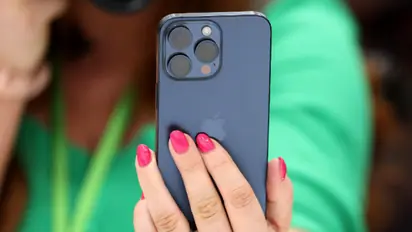iPhone tips: Here is how Apple users can lock any app using Face ID

Synopsis
iOS 18 introduces a new feature that allows users to lock individual apps with Face ID. This enhances privacy by requiring biometric authentication to access specific apps, addressing concerns about unauthorized access.
Many users worry about their privacy when they give their iPhone to a family member who wants to see pictures from their most recent vacation or a toddler who wants to play games. They are concerned about the potential for the iPhone user to access an app that they would like keep hidden, sometimes on purpose. The introduction of individual app lock capabilities in the most recent iOS 18 software allays this worry.
The biometric lock feature is not new. It has long been available through a number of apps that use Face ID or Touch ID on previous iPhone models. With WhatsApp being an exception, they have primarily been banking and financial apps. The iOS 18 update, which adds native app locking with Face ID data, makes it possible to lock the remaining applications, including the Photos app. As a result, applications will need the user to place their face in front of the iPhone's front camera in order to unlock it using Face ID, much like the iPhone does.
Also Read | Google Flights' new feature will allow users to book cheaper flights conveniently
Users must first confirm that iOS 18 is installed on their iPhone. iPhone XR and later devices are supported. The app menu now has a new "Require Face ID" option that lets users conceal an app's content behind a biometric lock. Additionally, hiding an app is another feature available on the iPhone. When an app is hidden using Face ID, it appears in a different Hidden folder within the App Library rather than on the home screen. Additionally, these applications' alerts are hidden, and there are no background instances of them in the most current apps.
How to use FaceID on the app?
- To access an app's menu, long-press its icon.
- To lock the app using Face ID, select the "Require Face ID" option.
- A popup to confirm the activity will appear on the iPhone.
- To proceed, tap "Require Face ID" on the popup.
- The application will always be locked and require Face ID in order to access its contents.
- Select the "Hide and Require Face ID" option to make the app invisible.
Also Read | iPhone 16 series: How to use and customise the Action Button?
Find the latest Technology News covering Smartphone Updates, AI (Artificial Intelligence) breakthroughs, and innovations in Space exploration. Stay updated on gadgets, apps, and digital trends with expert reviews, product comparisons, and tech insights. Download the Asianet News Official App for everything shaping the future of technology.